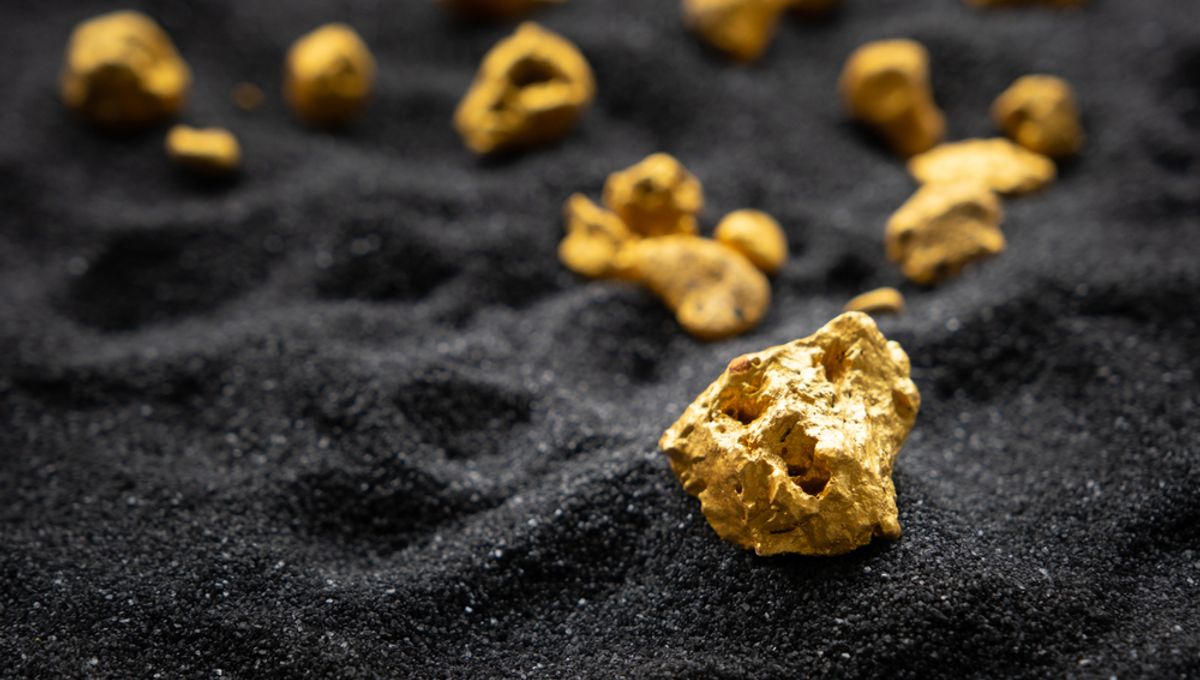
Right now, you’re standing on a goldmine. There’s so much gold on Earth you could cover every bit of land on the planet in it to a depth of 50 centimeters (20 inches), according to one calculation. So why is gold so rare that it’s a byword for preciousness? Because almost all of it has sunk to the planet’s core, beyond the reach of even the most ambitious miner.
The Earth’s core is mostly iron and nickel, something we’ve established from the way seismic waves from earthquakes pass through it. However, there are impurities, making their presence known by altering the density, but too rare to identify individually – unless, like uranium and thorium, their radioactivity contributes to the high temperatures.
That being the case, the quantity of these impurities, precious metals included, remained a mystery. However, in 2006, a team of scientists found a way to estimate it. They pointed out that certain asteroids probably have a fairly similar composition to the Earth as a whole since they formed out of the same part of the protoplanetary disk.
By measuring the composition of carbonaceous chondrite meteorites, which come from these asteroids, we should be able to calculate how much of each element there is on Earth. Subtract the concentrations in the crust and mantle, which we have direct knowledge of, and you have how much of each is in the core.
There are a lot of assumptions here, and the situation is complicated by differences in the way the Earth and smaller objects evolved that would have allowed some volatile elements to escape the asteroids.
Nevertheless, the team, led by Professor Bernard Wood of Macquarie University, created a model to account for these differing paths and found a way to partially verify it. They noted that elements that do not dissolve in liquid iron would not be incorporated into the core. Consequently, these tend to be much more abundant in the Earth’s crust than we would expect if the planet was homogenous. In the process, they explained some anomalies in the concentrations of elements in the Earth’s mantle that had previously puzzled geologists.
These elements have the same abundance, relative to each other, in the Earth’s crust as in the meteorites Wood and colleagues tested, confirming the theory both formed out of the same material. However, the meteorites are much richer in elements that do dissolve in iron, for the obvious reason that when the Earth’s primordial magma ocean became its core, these materials got incorporated.
Based on this, Wood and co-authors could estimate the amount of each of these iron-soluble elements. Naturally, no one really cares how much lead or rhenium is trapped in the core, we want to know about the gold. “We can say that more than 99% of the Earth’s gold is in the core,” Wood told the ABC.
The same logic indicates that surviving asteroids, particularly those thought to represent the cores of planetesimals, retain large quantities of these elements. Getting to these is difficult, but a lot easier than drilling to the core, which is why NASA plans to launch a probe to Psyche, the heaviest such asteroid, in two months’ time.
Reports of the Psyche mission often feature ridiculous estimates of the asteroid’s value, ignoring the fact that if such a source of precious metals became available prices would plummet. The same applies to minerals trapped in the core. If somehow the gold there was released so we were all tripping over nuggets at the surface, no one would pay anything for them. “It’s a nice image to think we could all step outside and be knee-deep in the stuff,” Wood said, but if we did, no one would care.
Wood’s studies were published in Earth and Planetary Sciences and Nature in 2005 and 2006. Subsequent citations indicate they have stood the test of time.
Source Link: 99 Percent Of Earth’s Gold Is In Its Core